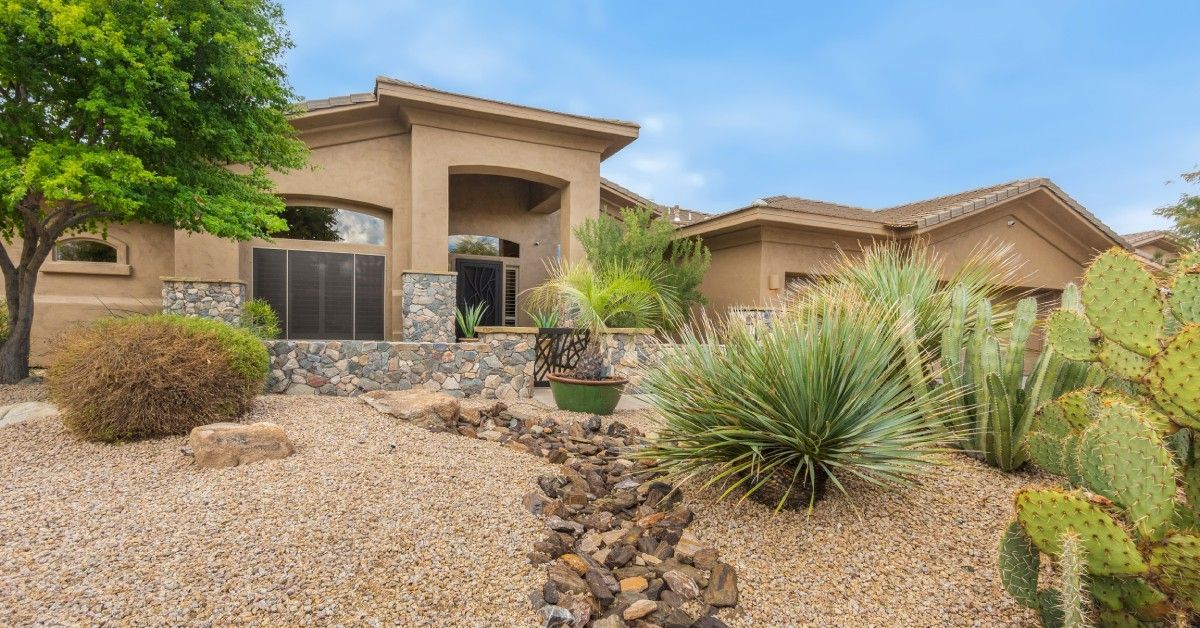Innovative Drought-Tolerant Landscaping Designs for 2025

Southern California homeowners face unprecedented water challenges. Recent years have brought severe drought conditions, mandatory water restrictions, and skyrocketing utility bills. Smart property owners recognize that traditional water-intensive lawns no longer make sense in our arid climate. The solution lies in innovative drought-tolerant landscaping designs that combine environmental responsibility with stunning visual appeal.
Professional landscape designers now create outdoor spaces that thrive with minimal water while delivering maximum beauty. These cutting-edge approaches transform properties into sustainable oases that increase home values and reduce maintenance costs. The shift toward water-wise gardening has become integral to responsible homeownership in the region. Explore what’s in store for 2025!
What Benefits Does Innovative Drought-Tolerant Landscaping Provide?
Drought-resistant landscaping delivers substantial financial advantages for Southern California homeowners. Water bills decrease dramatically when properties rely on native plants rather than thirsty turf grass. Many homeowners report savings of 40 to 70 percent on their monthly water expenses after completing landscape conversions.
Environmental benefits extend beyond water conservation. These landscapes support local wildlife populations by providing natural habitat and food sources. Native plants require no chemical fertilizers or pesticides, reducing harmful runoff that impacts groundwater quality. Carbon footprints shrink as maintenance equipment usage drops significantly.
Property values are also included in the mix, as they increase when professionally designed drought-tolerant landscapes replace outdated water-intensive features. Real estate professionals consistently report that well-executed California drought-resistant landscaping attracts buyers and commands premium prices. These outdoor spaces offer unique selling points that distinguish properties in competitive markets.
Which Native Plants Thrive Best in Southern California’s Climate?
California sagebrush creates stunning silver-green backdrops while requiring virtually no supplemental watering once established. This aromatic shrub provides excellent foundation plantings and works beautifully in mass plantings across slopes or large areas. Its drought tolerance makes it perfect for challenging locations where traditional plants struggle.
Lavender varieties offer beauty and functionality in water-wise gardens. These fragrant perennials attract pollinators while deterring pests naturally. Purple, white, and pink flowering varieties provide seasonal color that complements the Mediterranean-style architecture popular throughout the region.
Manzanita shrubs deliver year-round structure with their distinctive red bark and small evergreen leaves. These native plants require minimal care once established and produce delicate pink or white flowers that hummingbirds love. Their sculptural growth habits create natural focal points in contemporary landscape designs.

What Groundcovers Work Best for Water Conservation?
Dymondia margaretae forms dense silver-gray carpets that handle foot traffic while using minimal water. This South African native spreads slowly but steadily, creating living alternatives to traditional lawn areas. Its small yellow flowers add subtle color during spring months.
Native sedge grasses provide textural interest while conserving soil moisture effectively. These bunch grasses create movement and sound when breezes pass through their blades. They establish quickly and require watering only during extreme drought conditions.
Which Succulents and Cacti Create Ideal Landscaping Features?
Agave species offer dramatic architectural forms that serve as living sculptures in contemporary designs. These plants store water efficiently in their thick leaves, requiring irrigation only during establishment periods. Their bold shapes create stunning contrasts against smooth stucco walls or natural stone features.
Barrel cacti provide spherical forms that add geometric interest to planted areas. These low-maintenance plants produce colorful flowers during specific seasons while requiring virtually no care from homeowners. Their spines create interesting shadow patterns that change throughout the day.
Aeonium varieties bring unique rosette shapes and color variations to succulent gardens. These plants multiply naturally and create clusters that fill spaces economically over time. Their waxy leaves reflect sunlight, which helps them conserve moisture during hot summer months.
How Do Xeriscaping Principles Enhance Landscape Efficiency?
Xeriscaping focuses on water-efficient design that groups plants according to their moisture requirements. This approach places thirsty plants near water sources while positioning drought-tolerant species in areas that receive minimal irrigation. Strategic plant placement reduces waste and ensures each species receives appropriate care.
Soil improvement forms the foundation of successful xeriscaping projects. Professional landscapers amend clay soils with organic matter and drainage materials to prevent root rot while helping plants access available moisture efficiently. Proper soil preparation determines long-term success more than any other single factor.
What Irrigation Techniques Maximize Water Efficiency?
Drip irrigation systems deliver water directly to plant root zones, eliminating the waste associated with spray sprinklers. These systems reduce water usage by up to 50 percent while providing more consistent moisture levels that plants prefer. Professional installation ensures proper pressure and flow rates for optimal performance.
Smart irrigation controllers adjust watering schedules based on weather conditions, soil moisture levels, and seasonal plant needs. These devices prevent overwatering during rainy periods while ensuring plants receive adequate moisture during heat waves. Remote monitoring capabilities allow homeowners to manage systems from virtually anywhere.

How Does Hardscaping Reduce Overall Water Requirements?
Decomposed granite pathways and patios eliminate the need for irrigation while providing functional outdoor living spaces. This natural material complements drought-tolerant plantings while offering permeable surfaces that allow rainfall to infiltrate slowly rather than creating runoff.
Natural stone features create dramatic focal points that require no water while adding permanent structure to landscape designs. Boulder groupings, stone walls, and gravel gardens provide textural contrast against soft plant materials. These elements age beautifully and increase in value over time.
Permeable paving materials allow rainwater to recharge groundwater supplies rather than flowing into storm drains. These surfaces support vehicle traffic while contributing to overall water conservation goals. Professional installation ensures proper drainage and longevity.
What Mulching Strategies Conserve Soil Moisture Effectively?
Organic mulches break down gradually and improve soil structure while conserving moisture and suppressing weeds. Wood chips, shredded bark, and composted leaves provide excellent options that complement naturalistic planting designs. These materials require periodic refreshing but offer long-term soil benefits.
Inorganic mulches provide permanent ground coverage that never requires replacement. Gravel, crushed stone, and decorative rock options complement contemporary architecture while reflecting heat away from plant roots. These materials work particularly well around cacti and succulents that prefer excellent drainage.
Embrace Water-Wise Landscaping for Sustainable Outdoor Living
Southern California homeowners who invest in drought-tolerant landscaping today secure their properties’ futures and contribute to regional water conservation efforts. These innovative landscape designs prove that environmental responsibility and aesthetic beauty work hand in hand when professional expertise guides the process.
Water-wise landscaping represents an investment in your property’s future value and your community’s environmental health. Look no further than Allstate Landscape Services for a professional landscaping partner that truly understands drought-resistance better than anyone. We’ll help you transform your outdoor spaces into a vision of natural excellence.
